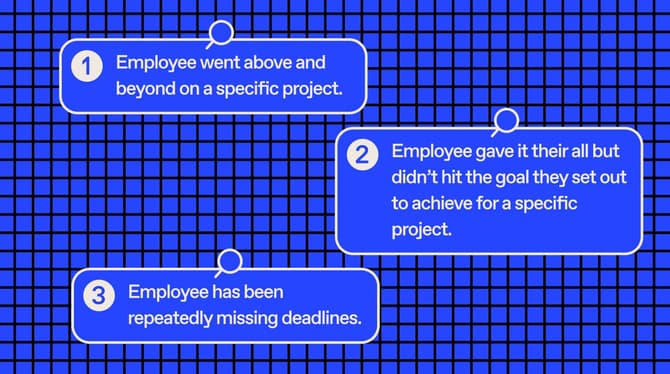Employee retention is a crucial part of organizational success. Most employers know this, yet a surprising amount don't measure it often enough (and some may not even know how to). If you want to create an engaged workforce that sticks around, calculating and tracking your employee retention rate over time is a big part of the equation.
Think of your credit score. Not knowing it means you can't improve your financial habits — and neglecting it can impact major life events like buying a house. Thankfully, with proper assessment and guidance, you can rebuild it. Similarly, measuring your retention rate consistently informs you of your progress, areas for improvement, and the effectiveness of your retention strategies.
In today's dynamic job market, retaining top talent is crucial for businesses to stay ahead of the competition. That's why we're here to guide you on how to calculate employee retention rate. In the long-run, investing a little time in crunching the numbers is well worth it.
Exclusive online summit
·
May 23 2024
Moments that matter: how to seed great work
Calculate your employee retention rate and learn strategies to keep it high
What is the employee retention rate and why should you track it?
The employee retention rate is a way to measure how successful your company is at keeping a stable workforce. It's a percentage of the number of employees who stayed with your organization during a certain period of time.
Employee retention rate is a KPI for workforce stability
Why is it so important to calculate this rate? It's a key performance indicator (KPI) to measure the effectiveness of your HR strategies.
- Qualitative retention measurement: Provides a measurable benchmark for assessing the effectiveness of employee retention strategies.
- Data-driven decisions: Identify areas of improvement, implement targeted actions to optimize workforce stability and reduce turnover.
- Part of employee engagement: Understanding retention rate is a part of boosting your employee engagement, and overall job satisfaction.
- Insights on impact: Better understand the impact of various programs, policies and interventions on employee loyalty and commitment.
In short, you can never go wrong with measuring your retention rate. It's an important tool for employers to evaluate the health of their workforce and make informed decisions to improve their retention and recruitment strategies.
Methods for your employee retention rate calculation
Methods for calculating your employee retention rate are crucial for understanding your organization's ability to retain employees. Choosing the right time period, applying the same calculation formula consistently and considering the types of turnover will allow for more accurate insights.
Choosing a time period
When calculating employee retention rates, choosing the appropriate time period is essential. While many organizations prefer yearly or quarterly calculations, these intervals may not capture the nuances of retention strategies.
- Shorter periods, like monthly or quarterly, offer detailed insights for identifying trends and making timely adjustments.
- On the other hand, longer periods, such as annually or bi-annually, provide a broader perspective to assess long-term retention initiatives.
It's important to strike a balance between frequency and practicality based on your industry's turnover rates and dynamics. This will enable you to gather meaningful data and improve retention in your specific business context.
Retention rate calculation formula
As long as you use the same formula consistently when calculating employee retention rate, you should be able to track changes and effectively determine how various retention strategies work.
A good starting formula for employee retention rate is:
Total number of employees at the end of a given time period ÷ total number of employees at the start of the time period x 100
For instance, let’s say your company decides to calculate your retention rate monthly. At the start of the month, you have 200 employees, and at the end of the month, you're down to 188. Plugging the numbers into the employee retention rate calculator, you'll get:
188 ÷ 200 x 100 = 94%
By expressing the retention rate as a percentage, you can easily compare it and interpret the data.
Consideration: Adjust for involuntary turnover and new hires
While this formula is a great starting point when comparing retention rates across months, it doesn't clarify who left and why. It's important to distinguish between different types of employee turnover — voluntary and involuntary — as both tell a very different story.
Voluntary turnover occurs when employees choose to leave the company, while involuntary turnover happens when employees are terminated or dismissed. To get a clearer picture of your voluntary retention efforts, it's recommended to exclude involuntary turnover and new hires from your retention rate calculation. This way, you can focus on assessing how well you're retaining employees who actively choose to stay with your organization.
By making these adjustments, you'll gain more accurate insights into employee satisfaction and the effectiveness of your retention strategies.
What is a good employee retention rate?
A good retention rate, just like a good employee turnover rate, depends largely on your industry.
For instance, hospitality is notorious for having an extremely high turnover rate of 62%, with average employees only remaining on the job for 110 days, according to 7Shifts. In contrast, healthcare has an average turnover rate of 25.9%.
In general, most businesses aim to have a retention rate between 90% and 95% for a given period. This means your top employees are willing to stay and your ability to retain talent is high.
However, while high retention rates indicate a healthy work environment, you should allow for a little bit of leeway.
All organizations benefit from the flow of employees. This allows the company to hire external talent while making space for dedicated employees to move vertically through the organization.
Understanding and improving employee retention rate
Businesses that regularly measure employee retention tend to have a better understanding of their workforce stability. They're also more likely to be nipping retention problems in the bud before they seriously affect their retention rate. Naturally, businesses that know their retention rate and continuously work towards improving it have better chances of retaining their employees long-term.
Analyzing and understanding your retention data
When you dive into your retention data, amazing insights await. Analyzing and understanding this data is a game-changer for organizations, empowering them to make data-driven decisions and develop targeted retention strategies.
By analyzing your retention data, you can uncover trends and patterns that highlight areas for improvement. Maybe certain departments or job roles experience higher turnover rates? With this knowledge, you can focus your efforts on addressing the underlying factors and taking proactive steps to enhance retention.
To make the most of your data, HR professionals can employ statistical analysis, trend analysis, and data visualization tools. These tools provide valuable insights, helping you understand the factors that contribute to retention or turnover. Armed with this information, you can have meaningful, data-driven discussions that lead to impactful solutions.
How to improve employee retention rate
If your organization already has a high retention rate, you can pat yourself on the back for your success at maintaining high employee morale and ensuring productive employees remain in the workplace.
However, most companies' retention rates have room for improvement. It's worth implementing employee retention strategies to encourage employees to stay while improving engagement and productivity.
📊 Learn about the latest labor market trends and employee engagement statistics, and how they can help you build retention strategies for a modern workforce.
Step 1: See where you stand and how you compare to your industry average
If you're consistently losing employees to other employers, or you struggle to attract new employees from other companies, knowing how to make employees stay will become an invaluable part of your HR strategy. It's worth comparing your retention rate to your competitors, especially if it's not something you usually do.
It's important to refer to trusted sources when comparing your company's performance to the industry standard or to your direct competitors. Retention rate benchmarks are sometimes difficult to find, so you can lean on your employee turnover rate to paint a better picture if needed.
Do you have your employee turnover rate on hand? The U.S. Bureau of Labor Statistics released their 2023 list of turnover rates per industry.
While where you stand in the industry is important, the main purpose of regularly calculating your employee retention rate is to discover how your retention strategies impact new and current employees. Once you've established procedures for regular retention rate evaluations for a given time period, you'll be able to compare your current vs. previous performance, which is often a much more valuable metric comparison.
Step 2: Gather feedback on employee retention
As more employees expect higher standards from their workplace, it's up to managers and senior executives to discover how to keep employees satisfied and motivated. If you've implemented ways to get employee feedback, gathering this information should be relatively easy.
Employee surveys are a great way to get feedback from a large number of employees at once. Officevibe's Pulse Surveys are short weekly or bi-weekly surveys you can send to understand why your retention rate is suffering. These surveys are a valuable asset in determining whether employees are satisfied overall.
Psst: You can also send a survey to specifically address retention. Use these 20 employee retention survey questions to understand why employees choose to stay at your organization and how their employee experience can be improved.
Step 3: Build a retention strategy (based on collected feedback)
Getting feedback from a large number of employees can be exceptionally useful, but it's only the first step in building a successful retention strategy.
Your strategy needs to take in every aspect of the employee experience, from their very first encounter until the day they leave your organization.
Create a great onboarding process
According to the Harvard Business Review, an effective onboarding process is essential to reducing turnover and boosting retention. Onboarding allows the company to put its best foot forward in welcoming new employees and building solid working relationships from the start.
Creating a great onboarding process requires understanding what employees expect and delivering a warm, human experience.
Ensure company-wide and team alignment
Understanding what success means at all levels is crucial to ensuring engagement and ultimately retention. Aligning on company, team, and individual goals gives employees a stronger sense of purpose because they can tie their objectives directly to the company's. When employees know what's expected of them, they'll also have better clarity on their role and responsibilities.
Check out our Vibe Check episode about day-to-day alignment and how it can affect employee turnover.
Give meaningful recognition
Employees want to feel that their work has meaning, and a large part of that is receiving appreciation and recognition. However, if improperly handled, insincere recognition can backfire. It's vital to have a solid strategy in place to improve employee recognition, both for teams and individuals.
Focus on professional development
While it's not always possible to offer every employee the vertical mobility they crave, horizontal moves and a focus on career development can often be enough to entice employees to stay in a company. Having regular, honest career talks is key to maintaining a high average headcount of motivated and inspired employees.
Offer fair pay
Offering fair and adequate pay also helps improve your employee retention rate. Not only does this help people feel valued, but it also makes it less likely that they'll leave for another company, which is often significantly more expensive for the organization than offering a pay raise.
Step 4: Recalculate your retention rate and keep tracking it over time
Once you start implementing various retention tactics, evaluate your rate over a monthly or quarterly time period to measure their success. Remember that some strategies, such as raises and meaningful recognition, may produce results rapidly, while others may take more time.
Step 5: Adapt and iterate your retention strategy
Workplace culture and employee perceptions evolve continuously, so it's important that your retention strategy changes accordingly. Regular measurements and feedback from employees can help you adapt to these changes before they take a toll on your retention rate. Even small tweaks may be sufficient to keep your rate at optimal levels for your organizational needs and enable your company to reap the advantages of an engaged, dedicated workforce.
There are numerous benefits of employee retention for businesses, including:
- Reduced costs: Many studies show that losing employees is costly. Not only does it cost your business money to find, hire, and train a new employee, but it also results in lost productivity and decreased employee morale. When retention is high, you can avoid both the hard and soft costs of turnover.
- Improved employee productivity: The longer a person works at a company, the more productive they become. Long-term employees understand the company's processes and have the experience and know-how needed to do their job well. What's more, replacing employees requires time and effort from other team members. Having to teach new hires the ropes makes the team as a whole less productive.
- Boosted employee engagement: An employee who is enthusiastic about their work will be more likely to put in extra effort, and less likely to make mistakes. Improving retention also impacts engagement because it leads to a healthier workplace culture, better sense of community, and more positive morale in general.
- Facilitated recruitment: A high retention rate is a KPI people leaders and recruiters should shout from the rooftops. It tells candidates and top talent that your organization is a great place to work by showing first-hand that employees actively look to stay there.
Step 6: Perform continuous monitoring and adjustment
To maintain a thriving workforce, continuous monitoring of the retention rate is key. It allows you to assess the effectiveness of your strategies and stay on top of any changes or trends.
HR professionals should regularly analyze how the retention rate aligns with the implemented strategies. This analysis helps determine their impact and guides necessary adjustments to keep improving.
Adaptation and refinement of retention strategies based on data analysis and employee feedback are crucial. This ensures that your strategies are always in line with organizational goals and meet the needs of your employees.
Creating a culture of continuous improvement fosters an environment where retention strategies are consistently evaluated, enhanced, and optimized for better outcomes.
Remember, employee engagement plays a pivotal role in retention. It's essential for HR professionals to prioritize creating a culture that nurtures engagement, as it directly influences overall retention rates.
By continuously monitoring, adapting, and engaging your employees, you can proactively approach retention, boosting the likelihood of long-term commitment and satisfaction among your valuable team members.
Boost your employee retention rates and enjoy the benefits of an engaged workforce
High employee retention rates indicate a satisfied workforce, and regularly measuring them can help you catch potential issues before they escalate. That's because calculating and tracking your employee retention rate helps you evaluate your strategies, spot areas for improvement, and make informed decisions. It's a simple key to unlock success at your company.
Remembering these three takeaways will help you make the most of your employee retention rate calculations so you can reap all the benefits:
- Consistent measurement of the employee turnover rate provides insights into workforce stability, boosts employee engagement, and enhances job satisfaction.
- Analyzing retention data and adapting strategies fosters a proactive retention approach.
- Continuous monitoring, adjustment, and employee engagement lead to long-term commitment and satisfaction.
Keep your employees happy and reap the rewards of an engaged workforce! We have compiled effective strategies to help you be successful in retaining employees for the long term.
Equip HR and managers with tools to engage, recognize, and drive performance.




